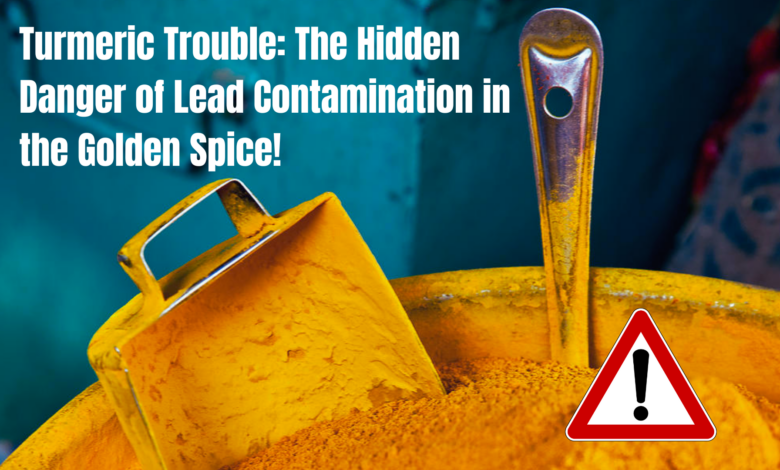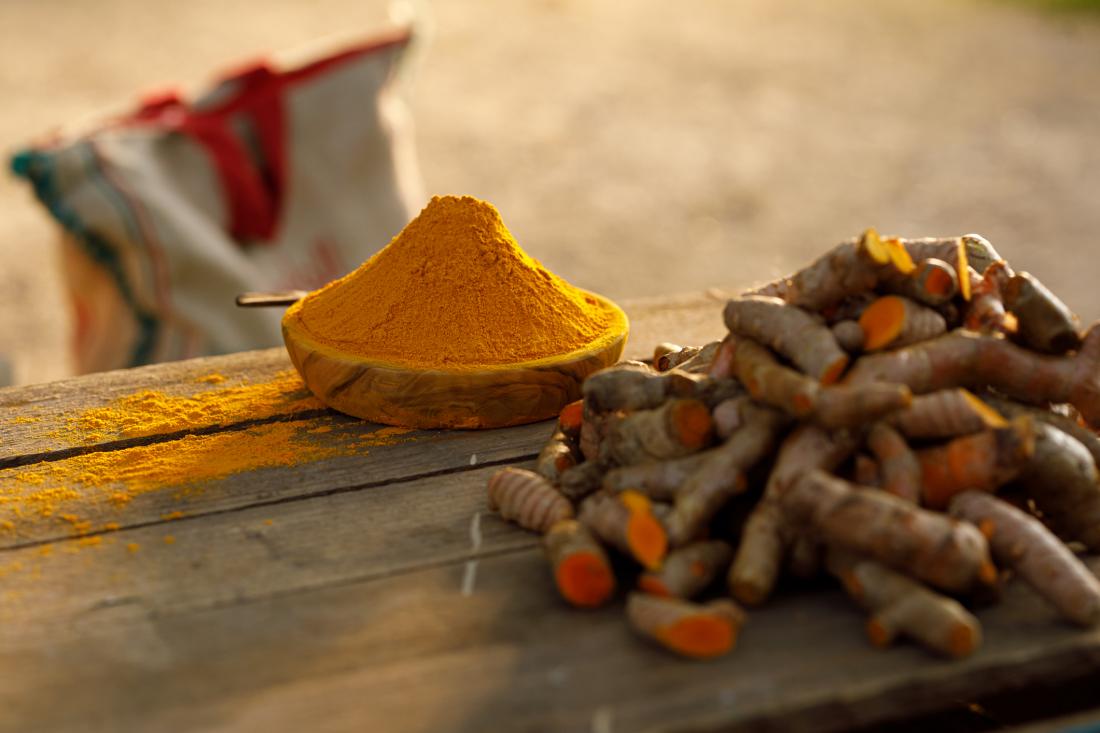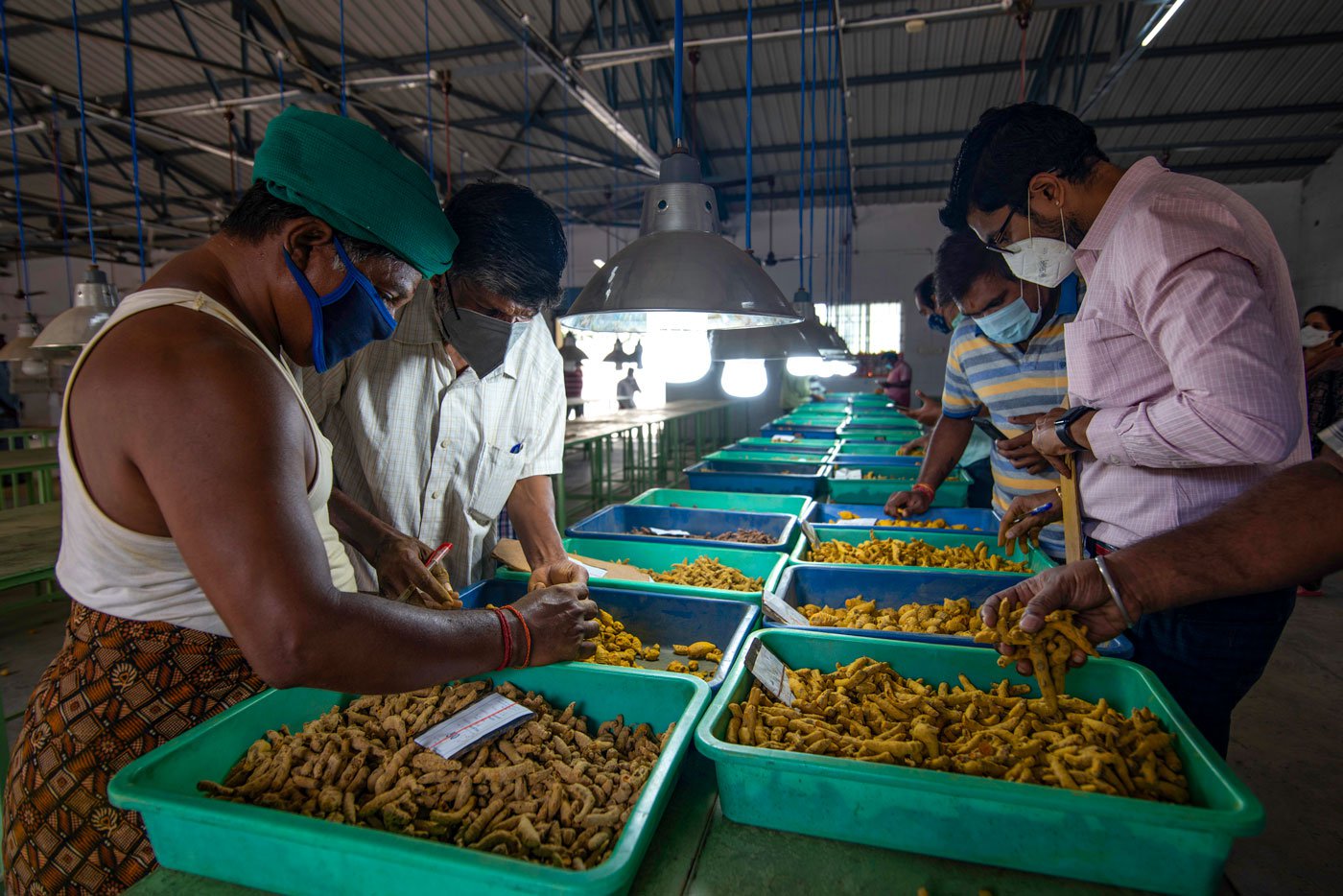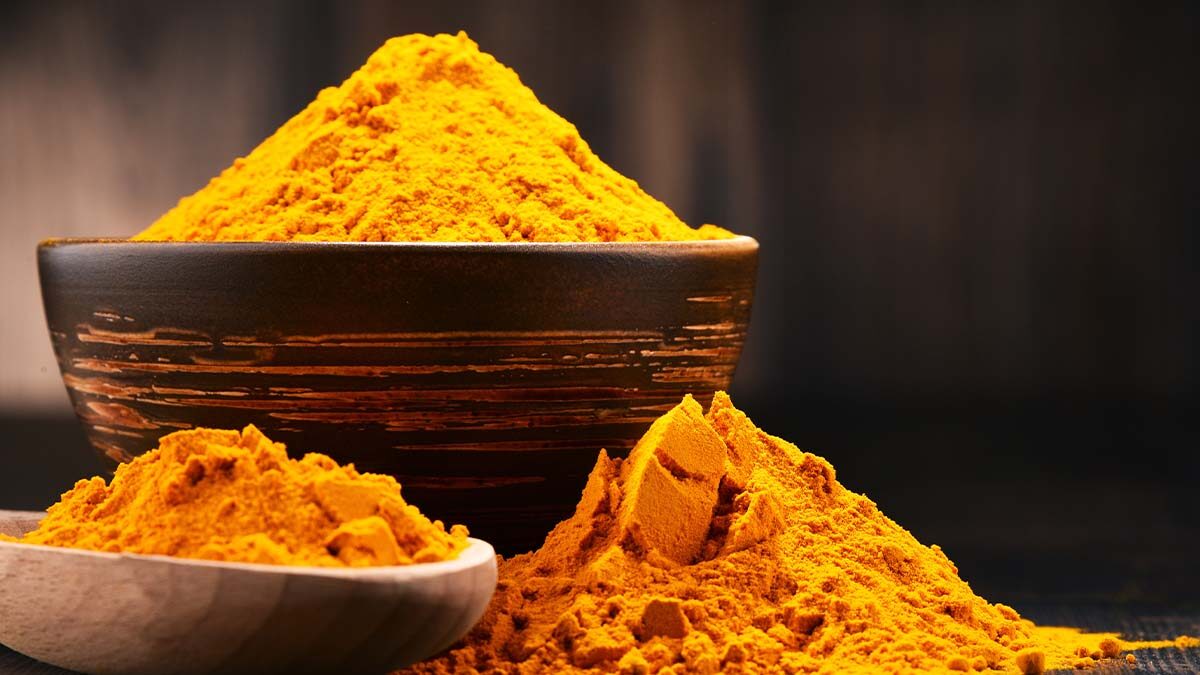Turmeric Trouble: The Hidden Danger Of Lead Contamination In The Golden Spice!
Lead-tainted turmeric highlights food safety issues and profit-driven practices, risking health. Protect this golden spice's purity for its value and our well-being.

Sometimes considered the “golden spice” owing to its golden colour and a strong flavour profile that is both spicy and aromatic, besides its known health benefits, turmeric’s strong position in the hearts of people across kitchens and traditions worldwide is on trial following toxic lead contamination reports in India, Nepal, and Pakistan.
This impurity has made turmeric, a symbol of healthy whites, become a potential health hazard and endanger millions of consumers globally and locally, driven by unethical practices that enhance its colour and appeal.

Today, most healthy foods are discovered to be adulterated with poisonous agents that may not even be known to their consumers. Heavy metals in spices such as turmeric and pesticides in fruits and vegetables are typical examples in this direction, and the push for mass production, cosmetic appeal, and shelf life have led to massive adulteration of food.
Such harmful chemicals, used to add colours, textures, or taste, have significant risks if used over time while drinking or eating, creating an everyday staple into something more sinister. We, as consumers, end up wondering whether the food is safe for our health.
Economic Motives and Toxic Practices: Using Lead Chromate to Enhance Turmeric’s Colour
Lead chromate is sometimes added to turmeric to give it an artificially enhanced colour, yellow, due to its richer appearance, which turns the compound toxic. It is known that turmeric does have a naturally rich yellow colour. However, the quality of turmeric, the soil it was grown in, and its processing can alter this.

However, in a highly competitive market where colour appeal plays a reasonable role in consumer buying decisions, traders and producers often use lead chromate as a quick fix. Taken as a chemical, this turns into a bright, contrasting colour that turns the low-grade or old turmeric lacklustre into wide eyes.
Economic motives very much drive the actions of traders. For example, they can sell adulterated turmeric at a higher price by enhancing its appearance for maximum profit; therefore, they are able to do this. Unfortunately, this low-cost method of strengthening turmeric’s appearance carries serious contamination risks with heavy metals. This contamination may lead to serious health problems for consumers who ingest the contaminated spice.
Toxic Turmeric: Investigations and Recalls Uncover Widespread Lead Contamination
Various studies have been conducted by different organisations concerned with food safety regarding lead contamination in turmeric in India, Nepal, and Pakistan. All these studies have thus raised the alarm as they have shown that lead chromate, a harmful chemical, is added to most turmeric to make it look better by giving it a brighter colour to be more attractive to the customer.

In response to these findings, regulatory and safety authorities in these nations have undertaken several significant recalls within and outside the borders. For instance, in this regard, some consignments of turmeric, especially those heading for export, have been found to have lead levels above acceptable levels, thus having these products withdrawn from the market by these regulatory bodies. These investigations blow the lid off the voluminous adulteration of turmeric but expose the problem of enforcement of food safety standards, especially in areas with scant oversight.
The recalls have generated wide international attention to the problem, emphasising the government and private sector’s intensified actions to ensure safe and quality turmeric produce. Despite all this, the problem still haunts the spice industry, which is why stricter monitoring and regulation are essential.
Systemic Gaps and Lack of Awareness: Uncovering the Roots of Lead Adulteration in Turmeric
The persistent problem of lead contamination in turmeric is very much related to farmers’ and traders’ unawareness of the dangers of lead chromate and its associated effects on public health over time. In many regions where turmeric grows and is processed, producers have been influenced by economic factors and limited education on food safety to put profits before the standardisation of safety.

Such information remains inaccessible to farmers and traders, not knowing about lead chromate’s toxic properties, including its ability to cause neurological damage, organ failure, and other serious health complications. Subsequently, they unknowingly or negligently apply lead chromate as a colouring agent, believing it to be a harmless way to help make the product more marketable.
Inadequate regulation and enforcement of food safety standards further complicate the issue in the supply chain of turmeric. Since turmeric is such an economically important crop, turmeric production, processing, and distribution in India, Nepal, and Pakistan are not effectively monitored. Ineffective inspections, inadequate facilities for regular testing, and fragmented oversight mechanisms make it harder to detect and intervene against adulteration.
Another dimension of this problem is that the mild punishments given for food safety violations also lie behind this issue. The motive is deterred much less than it would have been under a stricter regime. There lies a systemic defect in this regard, wherein contaminated turmeric finds its way to the local and international markets, posing substantial health threats to the consumer. It demands multi-level action: educating the various stakeholders, strong regulation or rule-making, and strict enforcement to build a safer and more dependable food supply chain.
The Silent Killer: Health Risks of Lead Exposure in Turmeric
General exposure to lead, however insignificant the amount may be, has severe effects on human health, which is bound to manifest both short-term and long-term effects. Shortly after the consumption of lead, individuals start suffering from dizziness, continuous nausea, and a sore stomach. Some of these symptoms may not appear to be high-intensity, but they do interfere with the normal flow of life. They could go unnoticed or undiagnosed, thereby allowing the toxic exposure to persist unabated.

Long-term exposure, however, is more insidious and corrosive because the metal accumulates in the system over time, causing chronic poisoning. More ominous remains the neurological effect, especially in children whose developing brains are very susceptible. Long term exposure to fluoride can cause learning disabilities, decrease cognitive function and behavioural problems including hyper-activeness or aggression. Long term exposure is also not spurned on adults, especially when this exposure destroys the body’s kidneys and livers, thus playing havoc with the body’s detoxification systems.

In addition, it can lead to severe damage to the cardiovascular system because exposure to lead usually increases the risk of hypertension, arterial impairment, and other heart conditions. This also leads to fertility problems because both men and women suffer alterations in their reproductive health due to the actions of lead in terms of interference with hormonal balance and cellular functions.
The silent but cumulative nature of lead poisoning underscores the urgent need to address its sources: adulteration in food items for such health outcomes not to be incurred. Health impacts transmitted across generations necessitate wiping out lead contamination in consumer products like turmeric to safeguard public health.
Strengthening Food Safety: The Need for Rigorous Monitoring and Testing in Turmeric Production
Thus, food safety authorities must ensure that turmeric and other foods are handled safely by having more stringent monitoring and giving heavy penalties for adulteration. Therefore, a robust regulatory framework will surely deter unnatural practices like introducing lead chromate in turmeric to enhance colour.
Effective regulation will require fixations of permissible levels of additives and contaminants, complete with strict audits throughout the supply chain from farms and processing units to wholesale markets and export points. Audits can provide regular, unannounced checks and balances that identify and penalise offenders, thereby providing a strong disincentive for wrongdoers.

One critical step toward safety and quality improvement of turmeric is improved testing procedures. To follow is highly advanced tests for contaminants, such as trace levels of lead chromate, which should ensure that none of the compromised batches wind up in the consumers’ hands. Quality is crucial when shipping batches to other countries, as international markets uphold high standards. If a nation does not meet these standards, the global spice markets will tarnish the nation’s reputation.
Increasing the testing stringency and strictly penalising offenders will undermine consumer confidence in the safety and quality of turmeric. More cooperation between government and local authorities in understanding and promulgating food standards for consumers will eliminate adulteration and safety risks from food.
Building a Safer Food Future: Transparency and Sustainability in the Global Supply Chain
The lead contamination problem in turmeric emphasises a greater urgency for more transparency in the global food supply chain. Because food products travel from farms to tables worldwide, every production, processing, and distribution point must comply with safety standards.
Transparency is key for being accountable because it gives consumers and regulatory agencies the ability to identify origin and the quality of a specific product. Label standards and trusted traceability systems are must for producers to install. These will aid consumers to regroup and belief that the food they make shall be free of harmful contaminants such as lead chromate.

More importantly, the issue raises a pressing need for other non-conventional agricultural methods that highly regard quality and safety. Sustainable methods, such as organic farming and natural processing techniques, reduce reliance on chemical additives and adverse shortcuts that enhance product appeal.
If farmers are encouraged to adopt sustainable farming practices, the integrity of food products will be preserved, and environmental health will be promoted by minimisation of toxic substances in agriculture. Governments, industries, and consumers could support these best practices by pursuing policies, incentives and demand in the market for sustainably produced goods. A safer and more social food supply chain is based on transparency and sustainability. This guarantees that turmeric and other products retain cultural significance and nutritional benefits without risking public health.
Taking Action Against Adulterated Turmeric: How Consumers Can Ensure Safety
To guard against adulterated risk, this spice requires proactive consumers in acquiring and using it. Other measures to secure safe turmeric in the market include ensuring it is procured from well-known brands or from certified organic productions.
Such producers are likely to source turmeric with quality control at its most stringent and will be transparent about sourcing and processing the crops for their products. Organic certification also assures the consumer that no chemicals or synthetic additives have been used in the production of the turmeric, thus giving an added assurance regarding its purity.
The authenticity of this spice can also be verified by a simple test in its home application. When the genuine turmeric is mixed with water, it dissolves into a uniform yellow colour. However, the adulterated turmeric will have a bright yellow surface layer or settle down at the bottom, showing the presence of harmful additives like lead chromate. In this way, such contaminated turmeric can be easily identified for its use in cooking or consumption.
Thus, supporting organisations that are fighting food adulteration is essential. NGOs and consumer advocacy groups are instrumental in spreading the message on food fraud and pushing for stiffer regulations so that food consumers are empowered with the right knowledge to make proper choices. Backing such organisations through donations, volunteering, or even just increasing awareness will contribute to a much bigger movement to fight food adulteration and a healthier, safer food culture in the world.

Governments, industries, and consumers need to collaborate. There is an urgent need for strict regulations and checks regarding food safety. According to ethics, organisations acquiring and supplying goods should think of transparent practices, whereas adulteration should be prohibited by any organisation involved in both processes.
Simultaneously, consumers can make their own educated choices to aid groups campaigning for food safety. These will ultimately be essential to ensure clean, safe food production and protection from contamination risks.





